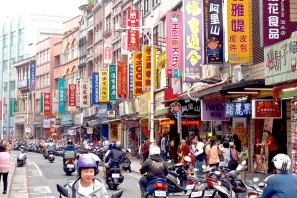Context
I used this activity with 11-12 year-old pupils at our urban Primary school in Slovakia. I ran it in the Civic Education class but it could be easily used in IT, History or Geography. The activity can be easily linked to topics on poverty, health, migration and environment. It can identify pupil attitudes along with their existing knowledge.
The activity did not take more than 30 minutes. Older pupils could do it even more quickly, as most of the time was spent on justifying the decisions being made. The activity can be adjusted to the group and to local conditions by selecting appropriate brands. I decided to include logos of some Slovak companies which are present in our region and which pupils might have encountered.
The activity proved to be really enjoyable, reflected in the group discussion. Pupils openly expressed their views and in some cases I noticed acceptance of other pupils’ opinions, even if they were different from a pupil’s own position.
Pupils assessed the different brands based on their own experience or that of their friends and parents. Opinions on a particular product were generalised to include the whole company (e.g. the shoe brand Baťa was assessed as not offering much choice since My mum keeps going to their shop and never buying anything. Some assessments were apparently influenced by gender and age considerations, for instance Lego was seen as a product appropriate for small kids and for boys. There were also interesting insights when pupils highlighted the unhealthy nature of some food products, but assessed the brand positively (e.g. McDonald’s).
The social situation of families was apparent in the assessments of some pupils who marked particular brands as expensive. The comments also indicated that some pupils paid attention not only to the price but also the perceived quality. Several declared that advertising did not influence their choice too much. Others expressed views which showed awareness of the global interdependence of product production and consumption. These pupils were interested in the conditions under which some products were made (e.g. expressing a view that if they knew that children of their own age made it, or that workers worked under bad conditions, they would not buy it).
When running the activity, it was very helpful to have an assistant to write down all opinions and reactions expressed. The comments can help identify areas for further intervention in relation to child labour, global interdependence, Fair Trade, life-styles and poverty. Comments written on the worksheets provide additional information to complement the statistical summary of the most popular brands, for which you only need calculate the average points per brand and create a chart. However doing all that during the session itself would significantly reduce the time for discussion and reflection.
The activity can be repeated in the same format as during the initial audit. The brands can be divided into two groups with equal representation of foreign and domestic/local brands of the same product types. This can provide further insights into the attractiveness of foreign vs. domestic brands, along with other considerations related to consumption.


